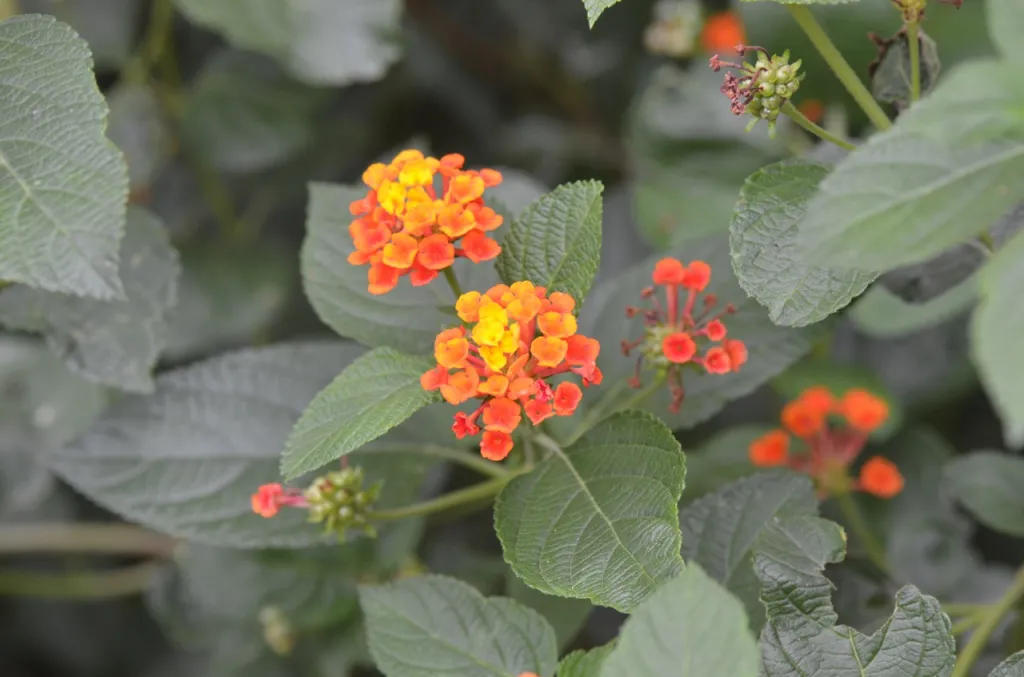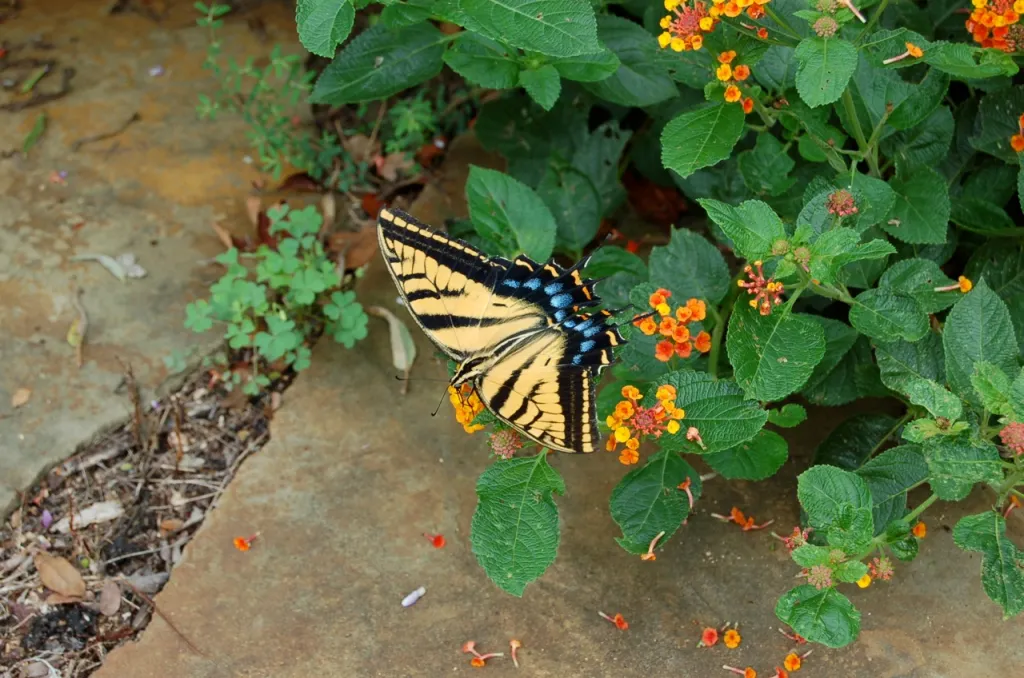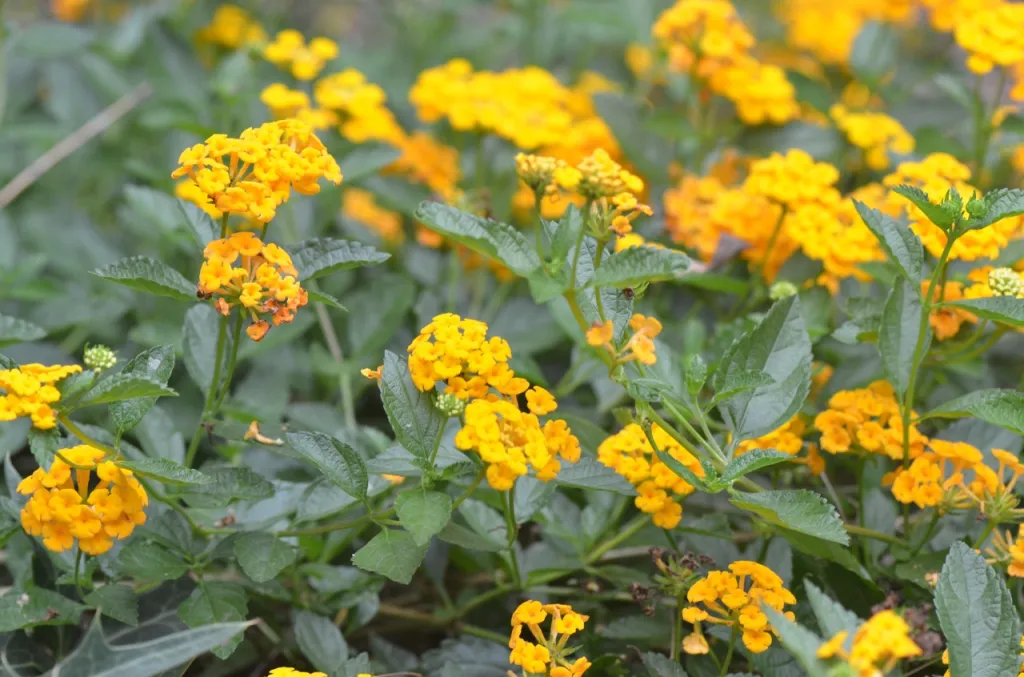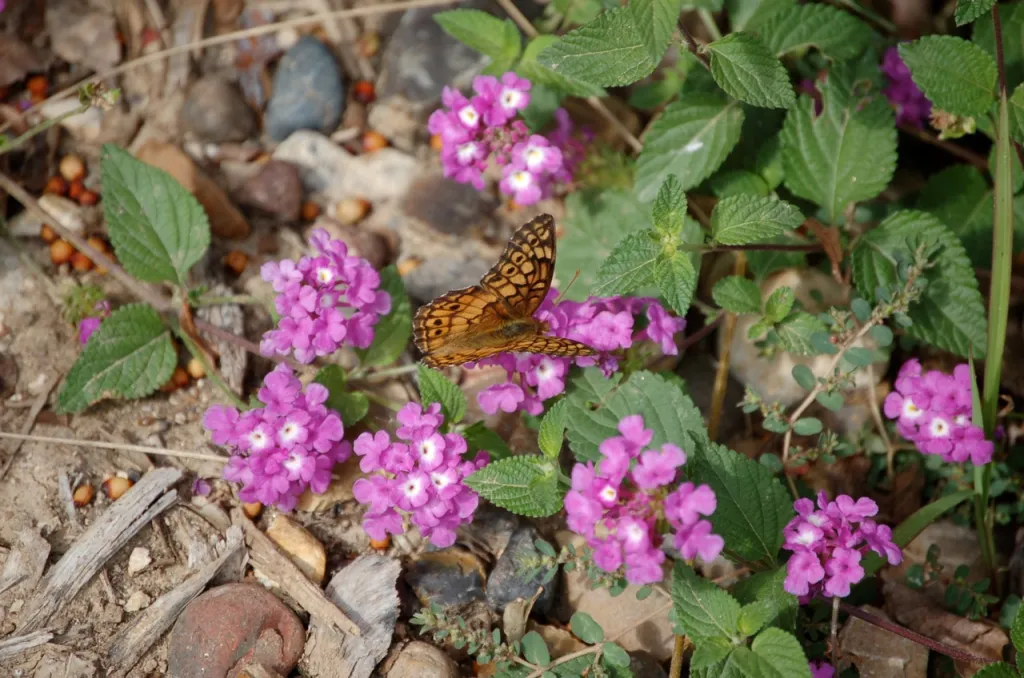By Delmar Cain

When the NICE (Natives Instead of Common Exotics) Committee of the Boerne Chapter of the Native Plant Society of Texas (NPSOT) decided on the candidates to recommend for plant of the month during 2012, it decided that its theme would be hardy, tough plants that not only survived the drought, but to some extent thrived during the drought. And as I write this article the NICE recommended plant of the month for June 2012, Texas lantana or calico bush (Lantana urticoides), is putting on its annual display of reds, yellows and oranges, demonstrating to all who notice why it made the final list.
Texas lantana is a perennial shrub, which blooms from April through October and seems to not mind the summer sun even in dry years. Just when other spring flowers are wilting, lantana can brighten any area in variety of soils so long as the soil is well drained. It has low water needs and is listed as highly deer resistant by the Lady Bird Johnson Wildflower Center in Austin. But the scofflaw deer in my neighborhood regularly stray into our yard, puff on a cigarette and browse the unfenced lantana. They put a few mountain laurel leaves into their pocket to ground into snuff for later.

In our area the lantana will generally die back to the ground in winter. Cutting back the much-branched shrub clears the branches, which can have prickles, and makes way for the new growth, upon which the new flowers will grow. I sometimes leave a few inches of the old growth to discourage the deer. I don’t know whether it is successful, but at least it makes me feel that I am making the deer earn every mouthful of new growth.
Texas lantana produces tight clusters of a small round berry-like fruit that is dark blue to black in color and poisonous to humans and livestock. The rough leaves have an aroma when touched that some find unpleasant. The crinkled leaves can cause a skin rash to those who are sensitive to the plant. Some of these characteristics may have been the origin of another scientific name or synonym for Texas lantana, (Lantana horrida). But birds eat the fruit and bees, butterflies and hummingbirds visit the flowers. My mother would put it into the “nothing is perfect” category.

It is a member of the verbena family, which includes some 75 genera and 3000 species of herbs, shrubs and trees, most of which are located in the tropical or in the warm temperate regions of the globe. Who would have guessed that frog fruit, teak and lantana are in the same family (family Verbenaceae)?
It is hard to go to a garden in the Hill Country, native or otherwise, that does not include at least one Texas lantana plant. It is so widespread, seen at homes, businesses and public places that one wonders whether it is a native plant at all. Only large wholesale growers could produce a distribution so complete. But the USDA indicates that Texas lantana is native across the southern border states of the United States from California to North Carolina, with the only exception being Georgia.

There are other species of lantana available commercially, which are not as neighborly as Texas lantana. Lantana camara, a pink and yellow variety, and Lantana montevidensis, a trailing white or lavender variety, can be aggressive and might move beyond your fences. Other cultivars and hybrids with different flower colors and growth habits can be found at nurseries. Some species do not produce fruit, which eliminates the risk that the plant will become invasive.
With all of the choices I am sure that you can find a lantana that is just right for your yard. If you find the right one you can find planting and care instructions on the Boerne NPSOT website.
By the way thanks to Emily Weiner and her committee, the Boerne Chapter of NPSOT will have a float in the Boerne Burges Fest Parade on June 16th. I know that the float will be grandly native enough; but be sure that you get one of the handouts—a native plant seed ball. Just follow the instructions and see what surprises show up in your yard next year.
